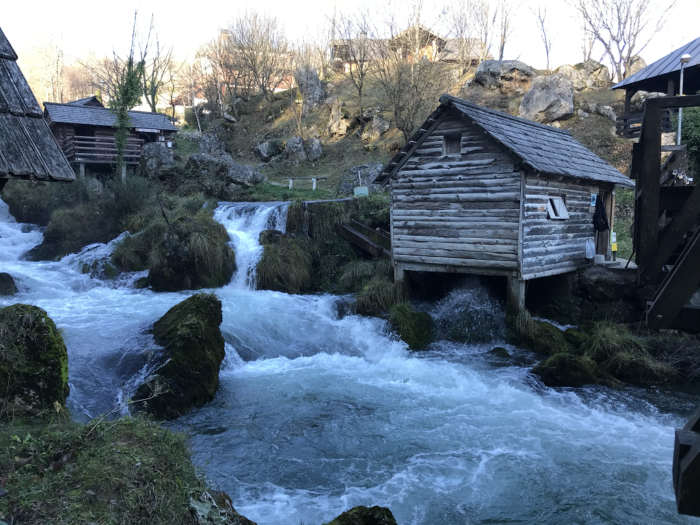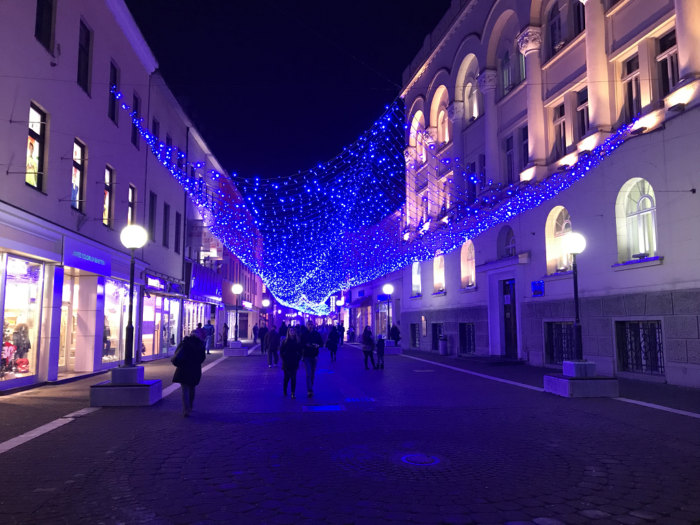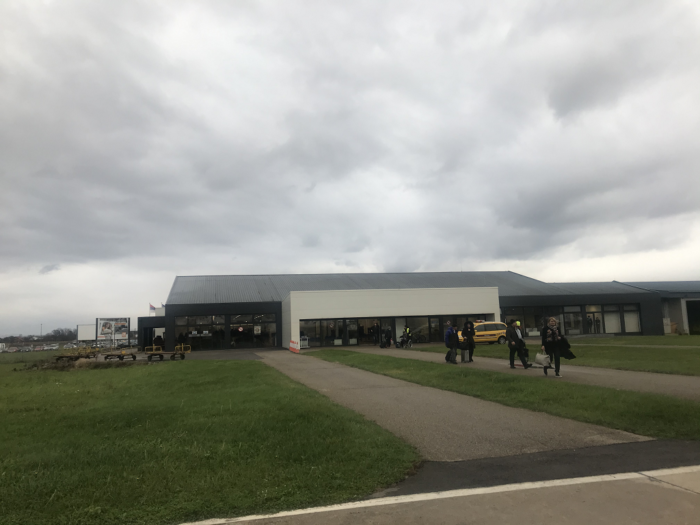One of the joys in life is browsing possible destinations for your next weekend getaway. And it’s even better when cheap flights pop up to a country you haven’t visited before, to a city you have barely heard of. That is what happened to us a few months back and the reason why we in December eventually sat on a plane to Banja Luka in northern Bosnia and Herzegovina.


Banja Luka – the Capital of Republika Srpska
Banja Luka is the second-largest city in Bosnia and Herzegovina and the capital of the entity of Republika Srpska. After the Bosnian War in the 1990s, the city and the region became Serb dominant as many Croats and Bosniaks were expelled and Serb refugees from other areas arrived. Upon visiting the city it is obvious that the scars from the war have not yet healed.
However, it is not only the Bosnian War that caused hardship for the inhabitants in the city. Banja Luka became a part of the Ottoman Empire in 1527 and was burned down by the Austrians in 1688. It was then a part of the Austro-Hungarian Empire until the end of World War I and the forming of the Kingdom of Yugoslavia. Further atrocities came upon the city during World War II, then a part of the independent state of Croatia. During this period the city’s Serbs and Jews were among those who were sent to concentration camps. The Croat Ustaše paramilitaries caused severe wounds in the city, demolishing buildings such as the Orthodox church of the Holy Trinity.
The 1969 earthquake caused even more damage and then there was, of course, the Bosnian War that saw the destruction of the city’s mosques.


Arriving in Banja Luka
We had an early flight from Stockholm-Skavsta Airport and arrived in Banja Luka in time for lunch. We had rented an Airbnb apartment in the outskirt of the city center. The building was a typical socialist apartment complex, but the apartment met all our requirements. Even though the area looked a bit rugged, it felt safe to walk to and from the center, even when dark.
We soon found ourselves exploring the city. The first thing we noticed was that the fog caused a spooky feeling as the temperature decreased and the smoke from all the chimneys didn’t rise. Many people in and around the city still use wood for heating. The Christmas market had opened in the center of Banja Luka and the streets were filled with people enjoying a warm December day. We walked to the cathedral before heading down towards the Vrbas river and the Kastel Fortress. The Fortress is the oldest building in the city and dates back to the 15th century.
During the evening we sat down at a restaurant for some food and to plan our coming days. At the end we decided to send an e-mail to a tour company. They were quick and we managed to arrange a tour for the next morning.



Tour to Krupa na Vrbasu
To our surprise, we had been able to arrange a tour to Krupa na Vrbasu with very short notice. The tour included three stops in total. The first stop was the hot springs or Srpske Toplice, right outside of Banja Luka. With the fog over the river Vrbas, the area had a mysterious feeling to it.
Our second stop was at Ethno Village Ljubačke Doline to see a traditional Bosnian village from the late 19th century. This reconstruction could almost be compared with Skansen in Stockholm, it was even more impressive with the hills surrounding it.
Our last stop was also our main stop, the village of Krupa na Vrbasu. This is where the stream Krupa meets the river Vrbas. The village is famous for its waterfalls along the stream Krupa, waterfalls with several traditional mills next. The river made it possible to enjoy even more of the nature of the area. With the sun shining we had a great opportunity to take a walk upstream.
You can read more about the day’s trip here: Banja Luka, Republika Srpska – Tour to Krupa na Vrbasu


Wine Tour to Vinarija Jungić
Directly after our first tour, we made sure to book a second one for the next day. We really wanted to see more of the countryside outside of Banja Luka and what better way is there than to enjoy some wine tasting? As luck would have it, there are vineyards in the area around Banja Luka so off we went to the vineyard of Vinarija Jungić.
We did get to taste some wine and see not only the vineyard but also a World War II monument and a re-enacted monastery. Add to that some Bosnian lunch in Čelinac that included a lot of meat.
You can read more about the day’s trip here: Banja Luka, Republika Srpska – Wine Tour to Vinarija Jungić


Last Day in Bosnia
We were probably fortunate with the weather during our first three days. Considering that it was December, we were more than lucky to enjoy some really good weather. Sadly that didn’t last also our last day.
I ran out for a last walk around Banja Luka while Susann enjoyed the warmth of the apartment. We had enjoyed the city enough and were now mostly waiting on getting back home to Little A. With that being said, we did go to the airport a bit too early.
We arrived at Aerodrom Banja Luka about three hours prior to departure. The airport was actually smaller then we thought upon arriving. The small kiosk didn’t have much to sell and the café had even less. This is an airport without any food and that opens up only for the one flight arriving and departing on the day. There wasn’t even a duty free shop. It felt more like a bus stop than an airport and it was a place where we had to wait for quite some time. We would really have liked to have found a restaurant for some lunch.


Our Recommendations
Traveling to Banja Luka might be slightly different compared to the rest of Europe. Here are a few of our recommendations when visiting the city.
- Make sure to get a prepaid SIM-card for your phone already at the airport. At Aerodrom Banja Luka there is a small kiosk selling the cards and you are able to either pay for only data or also calling. The cost for only data is the lowest we have come across in any country we have been to so far.
- Remember that this is a European country and that you will meet similar standards as at home. That being said, don’t expect everything to be shiny and new.
- Are you departing from Banja Luka International Airport? Please keep in mind that the airport is small, there is only a small kiosk and a cafe that doesn’t serve anything to eat, only drinks. Bring anything you will need and don’t arrive too early.
- Bosnia is using the Bosnia-Herzegovina Convertible Marka (BAM) as currency. The Marka’s value was locked to the German Mark and due to that, it has today a fixed rate to the Euro. This makes also makes it possible to pay with the Euro in many places without getting too bad an exchange rate.



